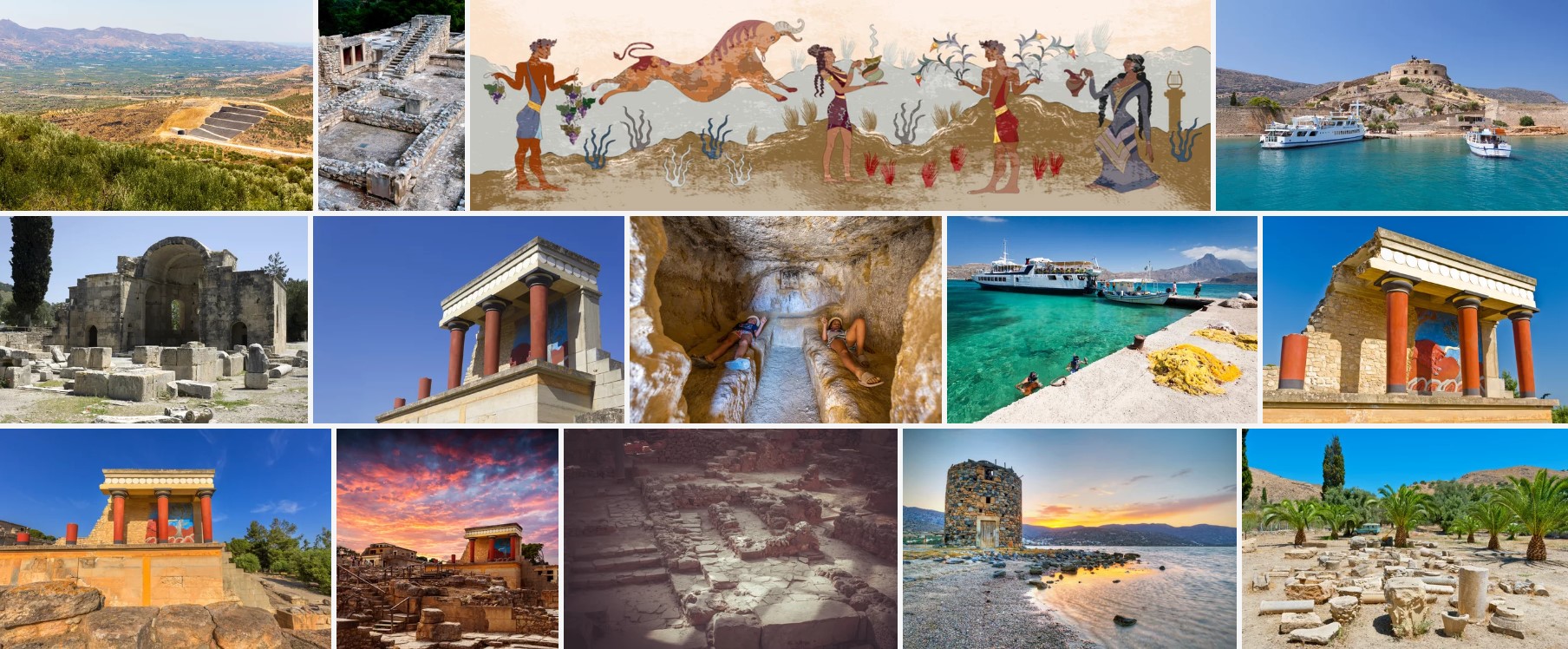The ancient ruins of Crete offer a unique opportunity to explore a fascinating part of history. From the Minoan palaces to the Venetian fortresses, Crete’s archaeological sites are some of the most well-preserved in the Mediterranean. For centuries, travelers have come to marvel at Crete’s astounding monuments and uncover its mysterious past. Whether you’re an avid historian or simply looking for an exciting vacation spot, these ancient ruins will not disappoint.
Crete is the largest of the Greek islands and the fifth largest in the Mediterranean. This stunningly beautiful island has been attracting people since ancient times and it is no surprise that it continues to be a popular tourist destination today.
The ruins of Crete are a living testament to its long history and they offer visitors an insight into some of Greece’s most impressive ancient civilizations. From Minoan palaces to Roman amphitheatres, visitors can explore some of the most remarkable archaeological sites in Europe. There are also many castles, churches and monasteries dotting its landscape, all offering a glimpse into Crete’s past.
Whether you are looking for an unforgettable adventure or just want to relax on one of its amazing beaches, Crete has something for everyone.
Discovering the History Behind Crete’s Ruins
Crete is one of the most beautiful historic islands in the Mediterranean, and it is full of ancient ruins and stories from centuries gone by. For those looking to explore the history of Crete, a visit to its ancient ruins can be a great way to get a glimpse into what life was like on the island many years ago. A tour through these ruins will transport visitors back in time as they learn about the different triumphs and tragedies that shaped this unique culture over time.
The Minoans were among some of the earliest people to inhabit Crete, dating back as far as 2000 BC! Remnants from this period are still visible throughout Crete’s landscape today, with places such as Knossos Palace standing out as some of its oldest surviving monuments. With guidance from experts or self-guided tours, visitors can explore these sites while learning fascinating historical facts along their journey.
Unraveling the Mysteries of Knossos Palace
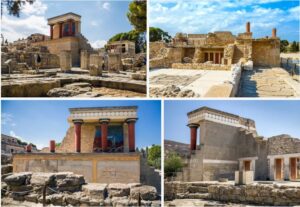
Unraveling the Mysteries of Knossos Palace is a must for any traveler to Crete. Located on the northern coast of Crete, this ancient palace was once home to King Minos and his court of mythological gods. The ruins are a reminder of the mysterious civilization that resided there centuries ago. Visitors can explore rooms filled with wall frescoes and pottery, marvel at grand courtyards and large paved walkways, as well as discover secret passageways leading to hidden chambers deep within the walls.
The ruins feature unique structures such as monumental staircases winding down into dark corridors and open-air courts lined with columns that were likely used for public gatherings. There is also evidence pointing towards religious ceremonies taking place in the palace’s courtyard center – one of many mysteries waiting to be unraveled by archaeologists who study its remains.
Exploring the Minoan Archelogical Sites of Crete
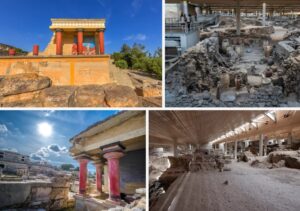
Crete is a Greek island in the Mediterranean Sea, known for its abundant archeological sites. Home to some of Greece’s most significant Minoan ruins, Crete offers visitors the opportunity to explore millennia of history and culture. With a unique blend of natural beauty, archaeological wonders and vibrant cities, Crete is an ideal destination for anyone interested in learning more about the ancient Minoan era.
The first major Minoan city on Crete was Knossos—a 5,000-year-old palace complex located near Heraklion. Discovered by British archaeologist Sir Arthur Evans in 1900 and excavated over the course of several decades, this sprawling site offers insight into the customs and architecture that characterized the sophisticated Minoan civilization.
Admiring the Beauty of Gortyn Ruins
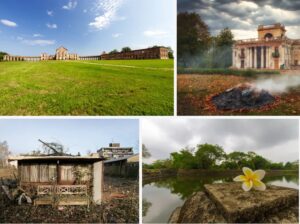
Crete is an island located in the eastern Mediterranean Sea and known for its abundance of ancient ruins. One of these sites, the Gortyn Ruins, provide a unique opportunity to explore the history and beauty of this beautiful island.
The ruins of Gortyn are located on the southern coast of Crete. They were first discovered by archaeologists in the 19th century and have since become a popular tourist destination. The site includes several ancient buildings, such as temples dedicated to Apollo and Demeter, as well as an amphitheater which was once used for theatrical performances. Visitors can also find a number of tombs dating back thousands of years that are scattered throughout the site.
The most impressive part about these ruins is their sheer size and stunning architecture; visitors will be left in awe when they catch sight of these majestic structures rising up from amidst an otherwise barren landscape.
Touring Phaestos: The Legendary Palace City
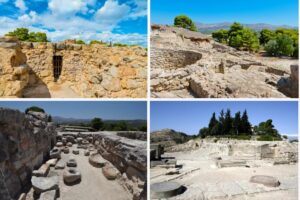
Touring Phaestos is a must for any traveler exploring the ancient ruins of Crete. Located on the south coast of the Mediterranean island, it is one of the most important archaeological sites in Greece. This legendary palace city dates back to 2000 BC and contains some of the most impressive remnants from Minoan civilization.
The palace was constructed by King Minos, who also built Knossos, another important archaeological site on Crete. The palace contained grand courtyards, halls and corridors that were used for rituals and administrative tasks. Visitors can explore these rooms to get a glimpse into what life was like during this period. In addition to its massive size, Phaestos also features numerous artifacts such as pottery and religious symbols that give insight into how people lived during this time period.
Investigating the Phaistos Disc and Its Secrets

The ancient ruins of Crete, an island in Greece, are home to many mysteries. Among these mysteries is the Phaistos Disc, a mysterious clay disc that dates back to the Minoan era (1700-1450 BC). The disc has been studied for over a century and remains one of the greatest unsolved mysteries of antiquity.
The disc is made up of 45 distinct symbols arranged in a spiral pattern on both sides. It was discovered in 1908 by Italian archaeologist Luigi Pernier at the site of Phaistos – an ancient palace near Heraklion on Crete’s south coast. Since its discovery, scholars have debated its origin and purpose; some believe it may be a form of early written language or even proof of alien contact!
Exploring the Ruins of Malia
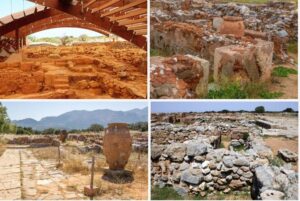
Exploring the Ruins of Malia is an exciting and educational experience for anyone interested in history or archaeology. Located on the Northern coast of Crete, the ancient Minoan palace of Malia was built around 1900 BC. One of the largest palaces ever built by the Minoans, it remains largely unexcavated and provides a unique opportunity to explore some untouched ruins from one of Europe’s first civilisations.
Malia’s ruins are composed of three palatial wings with gigantic courtyards enclosed by impressive stone walls as well as residences for noble families and servants. The palace has been preserved remarkably well, with many interesting artefacts still intact like clay pots, figurines, tools and jewellery made from semi-precious stones that give visitors a fascinating insight into life during this era.
